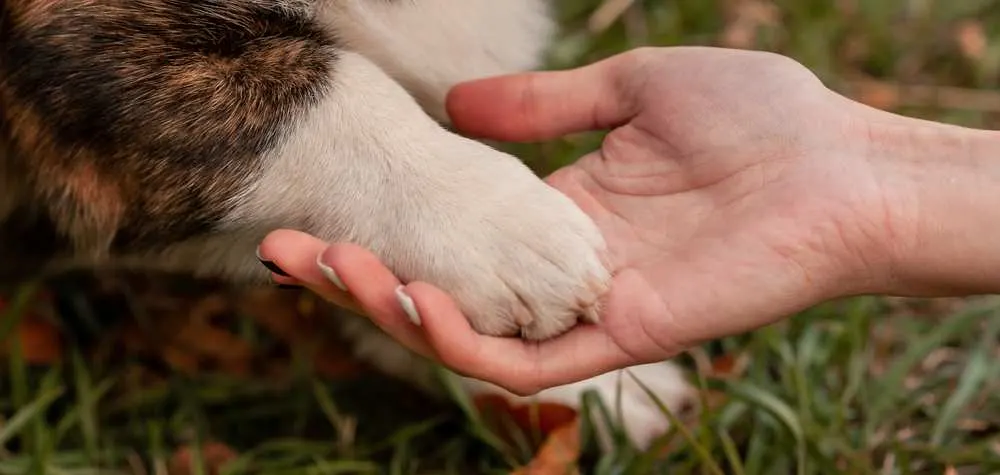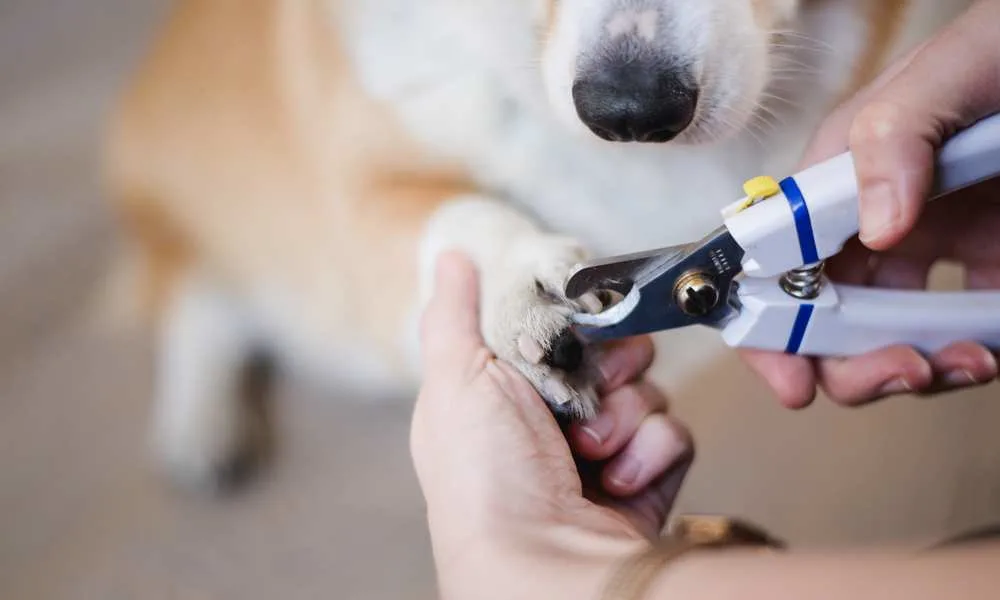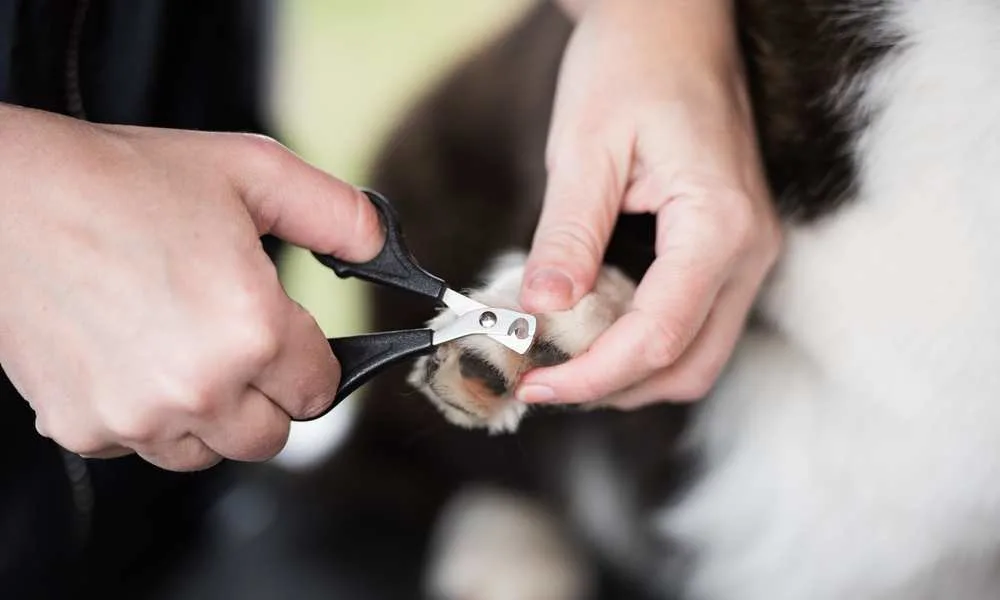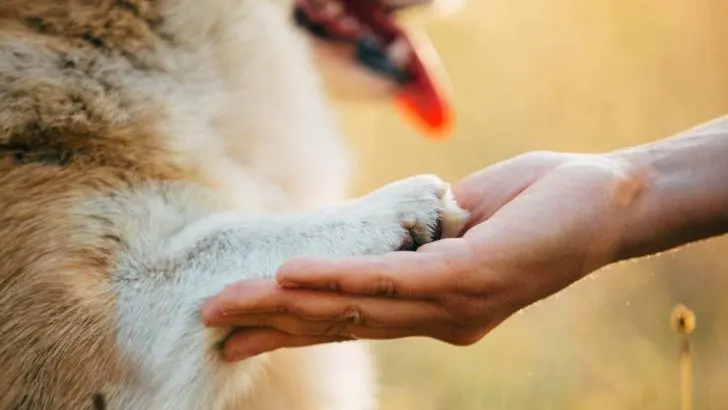The question of the day is: Do Corgis have dew claws?
The easiest way to find out the answer to this question and resolve all the dilemmas is to have a look at your Corgi’s feet. How many toenails are there?
Your Corgi, like most dogs, should have four nails on each rear foot and five nails on his or her front feet. This extra nail located on the upper, inner part of your pet’s foot is called a dew claw.
If this does not apply to your four-legged friend, do not worry, some dogs have dew claws on their rear feet too. Some can even have double dew claws.
We will not only help you understand what dew claws are but also help you resolve any potential problems that your dear Corgi can have with his or her dew claws. We will also tell you whether or not you should trim your pet’s dew claws and how to do it in the best possible way.
As you can see, there are many things we should discuss and many questions we have to answer, so let’s not waste any time and start right away!

Are Corgis Born With Dew Claws?
Before we start, we should determine if all Corgis are born with dew claws. Let’s get right down to business. The answer is yes.
Corgis are, just like any other dog breed out there, typically born with front dew claws.
What About Rear Dew Claws? Do Corgis Have Rear Dew Claws Too?
Some have rear dew claws, too, but it is a “rarity.” Only about one percent of Corgis will have rear dew claws at birth.
It is good to know that unlike some other dog breeds such as Anatolian Shepherd, Beauceron, or Catalan sheepdog, Corgis are not required to have rear dewclaws – it is not a breed standard, and you should not worry about it.
What If Your Corgi Does Not Have Dew Claws At All?
If your Corgi does not have any front dew claws, the chances are that they were removed when he or she was a very young puppy. Corgi breeders often choose to dock Corgis’ tails and trim their dew claws almost as soon as they are born.
We prefer that the choice is left to the owner. In this way, you can determine what is best for your canine friend. As you are about to discover, dew claws are not useless. Whatsmore, they can prove to be rather handy in certain situations.
Read More: Do Corgis Have Sensitive Feet?

What Are Dew Claws?
Does your Corgi have dew claws? If yes, stick to the end and learn what they are and how to care for them. It is in your Corgi’s best interest.
The easiest way to understand what dew claws are is to compare them to our thumbs and big toes. Of course, they do not have the same structure as human ones, but they are similar.
When you look at your Corgi’s front feet, the four toes you can see are in contact with the ground while he or she is standing are “the same” as our index finger, middle finger, ring finger, and pinky. As we have already mentioned, the dew claw corresponds to our thumb.
The same goes for your Corgi’s hind feet. If your dog has dew claws there, too, they represent big toes.
It is essential to pay attention to whether or not your Corgi’s dew claws are firmly attached to his or her feet. Typically when a dog has only front dew claws, they will be firmly attached. You can try to wiggle the dew claw forth and back to see if you can feel the bones that connect it to your pet’s leg.
Dew claws on rear feet are usually not attached in the same way. Instead of the bone, they are connected only by skin. As a result, they are much more mobile.
Why Do Dogs Have Dew Claws In The First Place? Do They Have A Purpose?
The dew claws that are on your Corgi’s front feet definitely have a purpose. When your furry friend is running, his or her front feet often bend, and the dew claws come in contact with the ground providing extra traction on slippery terrain. When your Corgi is speeding through your yard and taking sharp turns, the dew claws help stabilize the carpal (wrist) joint.
Your dog can find numerous other ways to use its dew claws. When chewing on a toy, bone, or some other tasty treat, your Corgi can use the dew claws to hold the object of interest more firmly.
Dogs sometimes clean themselves in a similar way as cats. They can then use dew claws to rub their eyes or parts of their face.
Some dogs can even learn to climb trees using their dew claws. Dew claws can prove to be lifesavers too. It might be far-reaching but imagine that your dog breaks through the ice and ends up in the cold water. In this horrid scenario, dew claws would help him or her to climb out of danger and stay alive.
All the above-mentioned things refer to dew claws that are attached by a bone. If your dog has dew claws attached by the skin only, there is nothing he or she can use them for. We can say that such dew claws lack any purpose.

Should Your Corgi’s Dew Claws Be Removed?
We cannot give a simple answer to this question. Some dew claws are best left on, while others are best removed as soon as possible in order to avoid problems.
So, Should you remove your Corgi’s front dew claws?
Now that you know that your dog’s front dew claws serve a purpose and can help your Corgi in numerous situations, it is quite clear that you should leave them be. Of course, you can remove them if there is a good reason for that, but we will talk more on that subject later on.
What About Rear Dew Claws? Should They Be Removed?
As we have already mentioned, rear dew claws are more often than not entirely useless. They are also attached loosely to the dog’s feet. Due to this, the rear dewclaws are more prone to injuries than the front ones. For this reason, veterinarians often recommend removing rear and double dew claws to prevent future problems.
Not all vets agree, though. The fact is that this type of injury is still relatively rare, and thus, many believe these surgeries are up for debate, especially if the rear dew claw is firmly attached. In this case, the dew claw is likely to have nerves running through it. If you remove such a toe, there can be some issues that occur when front dew claws are removed, such as the withering of the nerves that were in the toe.
If you still decide to go on with the procedure or your vet insists on it for some reason, at least try to schedule it at the same time with some other surgical intervention, such as when the dog is being spayed or neutered. In this way, the dog needs not to be anesthetized twice. It is a good thing since anesthesia has its risks as well. On the downside, the two procedures done simultaneously tend to slow down the recovery.
When Do You Have To Remove The Front Dew Claws Too?
We have already told you that front dew claws and those dew claws that are firmly connected should best be left alone. Unfortunately, there are some situations when they have to be removed as well. Those are:
- When your Corgi’s front dew claw is severely injured
- When a dew claw is affected by a disease such as a cancerous tumor
In these two cases, removal of the front dew claws is in the dog’s best interests. Luckily for you and your furry friend, these problems occur quite infrequently. There is no need to remove healthy front dew claws just because you wish to prevent these issues.
What About Dog Shows? Will The Dew Claws Or Their Lack Influence The Outcome Of Such Competitions?
It is not required to remove dew claws, but some breeders still choose to do it in order to “improve” the dogs’ appearance in the show ring. If you, too, believe that your puppy stands better chances without his or her dew claws (which is highly unlikely), and you want to do this procedure, you should best do it as early as possible.
Typically, this routine procedure is performed when a puppy is still under five days old. The dog will not feel any pain since the area is always numbed with a local anesthetic such as EMLA cream before anything is done.

How Can You Treat Dew Claw Injuries?
Even though dew claw injuries do not occur very often, they still happen from time to time. If you and your Corgi are unlucky enough to face such a problem, you should be prepared and act quickly to prevent further suffering or complications.
What are the most common scenarios?
- A nail becomes partially or entirely pulled off.
- Broken nail
- Split nail
- Infected nail
- Ingrown nail ( this usually occurs when the nail has not been appropriately trimmed)
Even though these nail injuries are generally not serious, they can be extremely painful. Moreover, they are prone to infection since your Corgi’s feet roam through all sorts of risky & dirty places.
What should you do when you notice any of the above-mentioned conditions? How can you help your beloved pet?
- Take your Corgi to the vet and have the condition/ injury assessed by a veterinarian.
- If recommended, make sure that the damaged nail is removed, and the ingrown nail is trimmed. It is best to insist on sedation even if the vet does not – your dog will appreciate it! The procedure is far too painful, and your Corgi can lose its trust in you if you allow him or her to suffer.
- Make sure your Corgi gets all the prescribed antibiotics and pain relievers in a timely manner.
- Protect the nail bed by dressing and remove it only after 3-5 days.
- Prevent the injury from happening again by clipping the dew claws regularly as soon as your dog fully recovers.

How To Take Care Of Your Corgi’s Dew Claws? What Is The Best Method To Maintain Dew Claws?
Every responsible dog owner knows how important it is to maintain a dog’s nails on a regular basis. Dew claws are no exception to this rule – they require your attention too.
Luckily for some owners, hyperactive Corgis tend to wear down their nails rather quickly, and that includes their dew claws too. In such cases, nail trims are not required at all.
What If Your Corgi Is Not Overly Active?
If your Corgi is relatively passive, which we seriously doubt, you will need to perform regular trims in order to keep his or her nails at a healthy, manageable length. You need to pay special attention to dew claws since they are not in contact with the ground as often as other nails are. As a result, the dew claws are likely to need more frequent trims.
When the nails are too long, they become a hazard, especially the dew claws. How come? Well, they can get caught on things or get tangled in something. Your dog can start panicking if this happens and hurt himself or herself even more.
A torn dew claw can cause a lot of pain. It can easily be prevented if you take good care of your Corgi’s nails. There is no excuse not to do it!

The Step By Step Guide To Trimming Your Corgi’s Dew Claws
Step one:
- Determine whether you should trim your dog’s dew claws by running your finger under the nail. If the nail catches your finger or hooks to it, it is time to take action!
Step two:
- Start trimming the dew claws as you would any other nail. Be careful not to overdo it, though. If you go too far, you may cause bleeding and pain for your beloved pooch. The rule of the thumb is to trim a dew claw back until your finger can slide off it easily.
Easy, isn’t it?
Our advice is to use high-quality bypass clippers. Your cuts should be precise, and you need to work quickly since Corgis are not very patient dogs.

Final Words
You now know all there is about dew claws. If your Corgis has dew claws, the most important thing to remember is to trim them regularly.
If you leave them untrimmed, the nail will curve down and become ingrown, and it will become even more challenging to maintain proper length.
If your Corgi has long dew claws, he or she is at risk of catching on things and getting injured. You do not want that for your beloved canine friend, don’t you?

